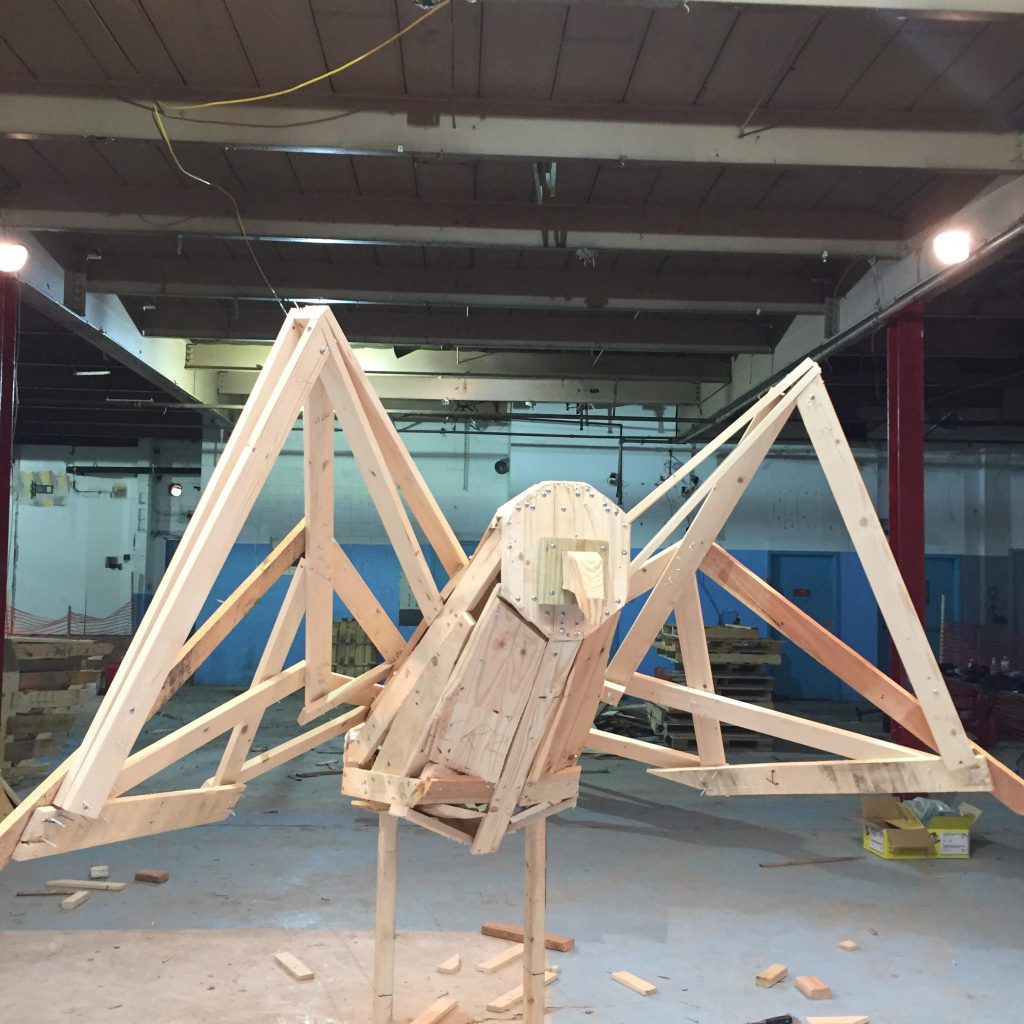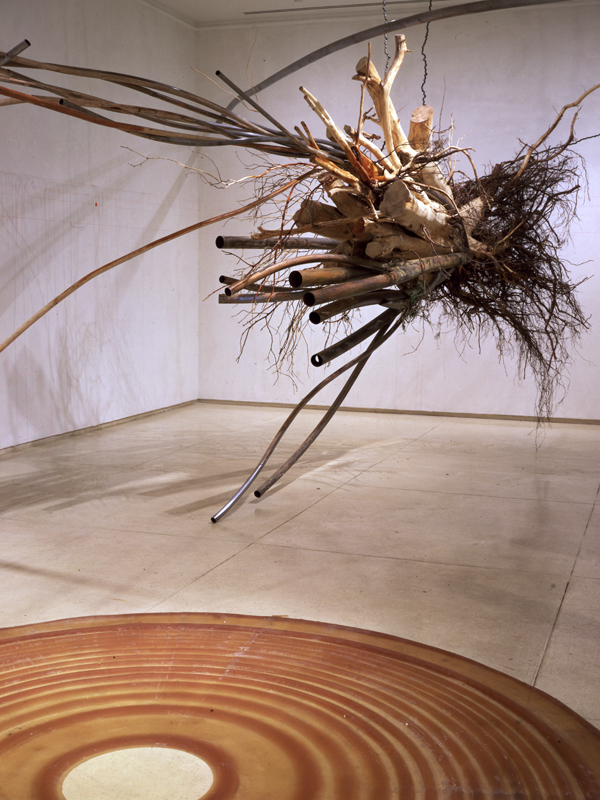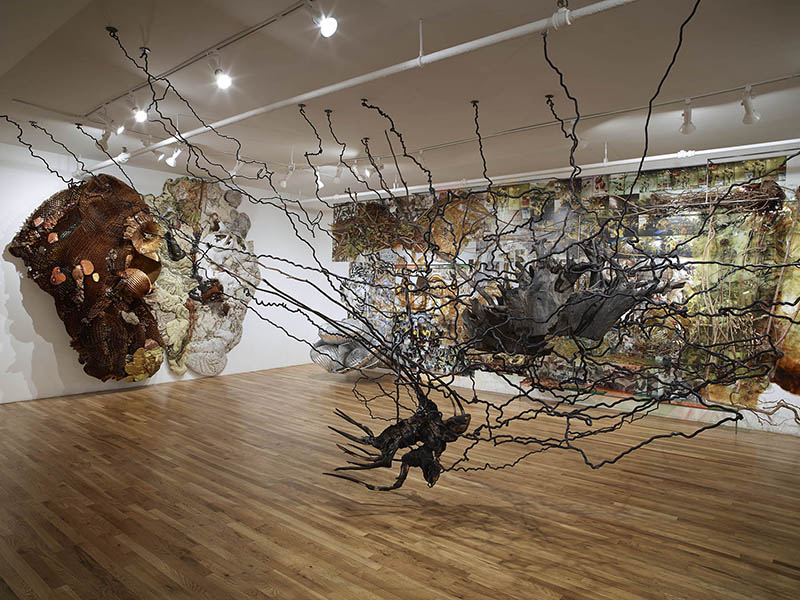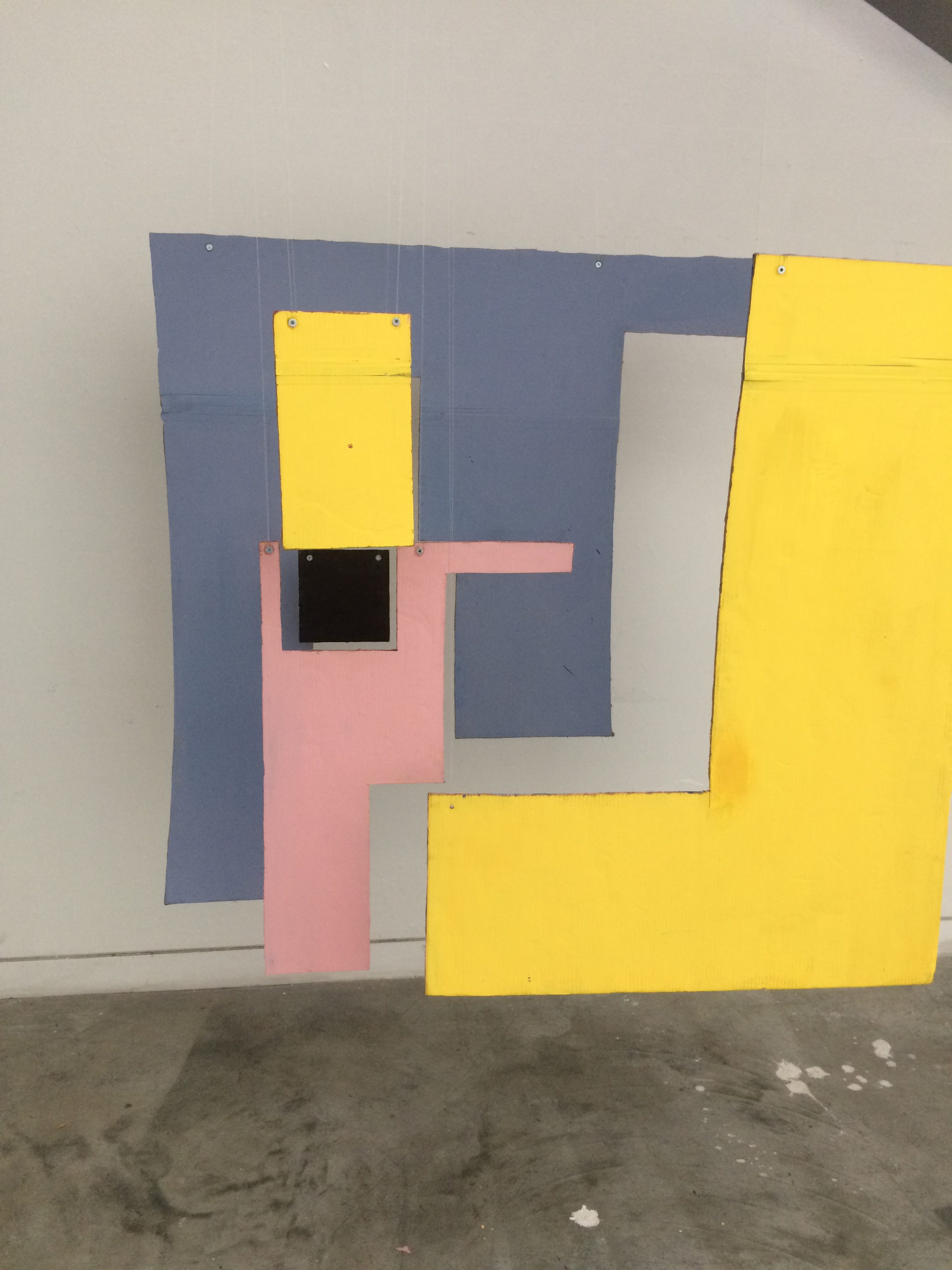
I am going to construct a hanging, nest-like installation made of found branches, sticks, ivy, and dried flowers. I will hang vine charcoal from the branches, using a pendulum-like motion to create a drawing on a piece of newsprint that has been placed on the ground. The viewer will stand in the center and manipulate the machine by pulling strings attached to vine charcoal. I will wrap twine around the hanging vine charcoal and make a small handle so that the user can simply pull the handle and the charcoal will swing in a pendulum-like motion. This is to give the nest a machine-like feel.
“At the heart of nest-building, at the heart of art-making, is this impulse to transform materials,” she said, “to gather bits and pieces of things that through a kind of magical leap become these objects that speak to us in so many different ways.”- Elizabeth Rooklidge
I see birds as artists, and nests are their art. When you step inside my nest, you will become the bird, harnessing found materials that birds use to create a drawing. This machine is making the statement: you don’t need man-made technology to create something special, look towards the natural world and the art that nature has already been creating for millennia.
I took huge inspiration from Nicolas Holibar, who is about to install a series of 12 large wooden birds in New York City this April. He constructs large bird sculptures out of found objects (particularly plywood) as a commentary on climate change and its effects on local bird migration through New York City.


My machine is a commentary on how human urbanization and development has effected the forests and birds who inhabit them. The piece is anti-(human)machine and anti-climate change. The nest is the symbol of the home we are losing to human development and climate change. There will be a lot of space between the branches to represent deforestation. The materials I collected are materials local birds use in their nests to form a connection with local birds specifically.
Each Spring there is a symbiotic relationship between the birds and the trees. In the early spring, birds make their nests in the trees, and the sound of their chirping stimulates leaf growth. As the migration habits of birds change do to climate change, so does the growth of trees.
The goal of my machine is to get the user to get in the mindset of a bird in a nest, and to start seeing birds as artists and their nests as art instead of just a home. Hopefully through this connection, the user will think about the greater implications of climate change, deforestation, and industrialization. I wanted to create a “natural” machine in protest of the industrial machines that are killing our planet.
“The reason I came into this project was because of the material I use. It’s just a great connection to the message we’re sending about the birds and the environment.” – Nicolas Holibar


I took more of an aesthetic inspiration from Judy Pfaff, one of the pioneers of installation art. She was involved in “the Art of the Nest” installation at the Katonah Museum in 2016, and created a nest from found objects. However, I was more inspired by her “Second Nature” and “Round Hole, Square Peg” installations, which include a large web of wire, string, branches, and driftwood. I liked the chaotic energy of her work and thought it would translate well into a piece about birds and the natural world.


